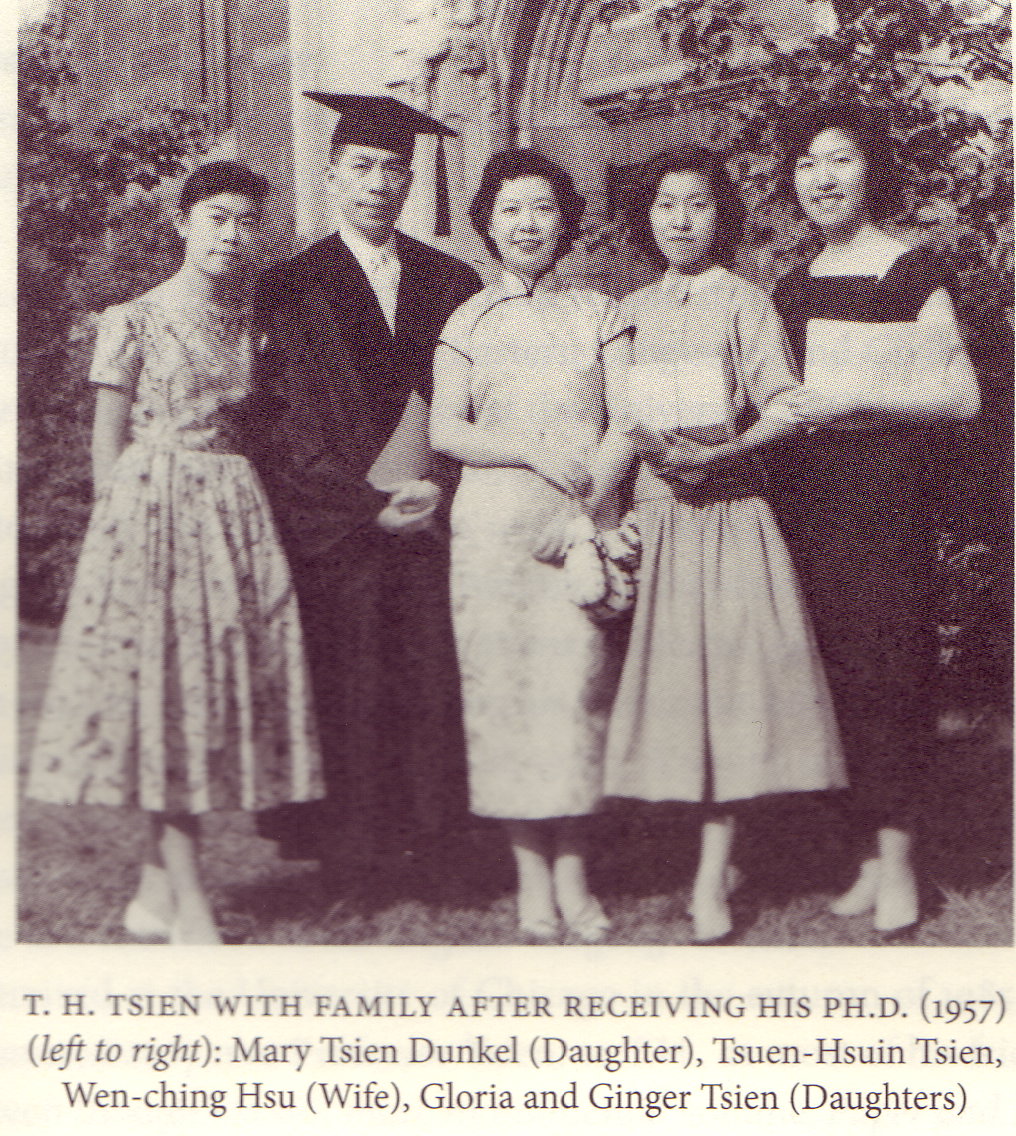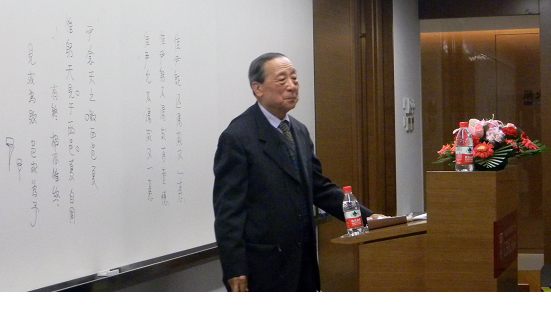News
News
T.H. Tsien, Professor Emeritus, publishes Collected Writings on Chinese Culture (Chinese University of Hong Kong Press, 2011)
Tsuen-Hsuin Tsien, Professor Emeritus in the Department of East Asian Languages and Civilizations and Curator Emeritus of the East Asian Library of the University of Chicago, has just published Collected Writings on Chinese Culture (Chinese University of Hong Kong Press, 2011), a collection of his English-writings on Ancient Documents and Artifacts; Paper, Ink, and Printing; Cultural Exchange and Librarianship; Biographies of Eminent Scholars; Memoir of a Centenarian; and Essays About the Author. Professor Tsien was born in Nanjing in 1909 and first came to the University of Chicago in 1947. He received his Ph.D. from the University in 1957, and was promoted to professor in 1964. He is the author of Written on Bamboo and Silk: The Beginning of Chinese Books and Inscriptions (Chicago: University of Chicago Press, 1st edition, 1962; 2nd revised edition, 2004), China: An Annotated Bibliography of Bibliographies (Boston: G.K. Hall, 1978), and the Paper and Printing volume (Volume 5.1) for Joseph Needham's Science and Civilisation in China (Cambridge: Cambridge University Press, 1984). The teacher of two generations of Chinese librarians in America, Professor Tsien resides in Hyde Park.
Table of Contents
Preface by Professor Edward Shaughnessy
Preface by Professor Anthony Yu

Creel Center to host “The Rise of the Book in Early China” Conference
The Creel Center for Chinese Paleography of the University of Chicago will host an international conference entitled “The Rise of the Book in Early China,” October 15-16, 2011. Some twenty scholars from throughout North America and Europe have accepted invitation to attend. A schedule and copies of papers will be made available on the Creel Center website in mid-September, 2011.
Marc Kalinowski to Present 2011 Creel Lecture
Marc Kalinowski of the École Française d’Extrême Orient, Paris, will present the 16th Annual Creel Memorial Lecture in May, 2011 at the University of Chicago. His topic is yet to be determined.
Song Huaqiang 宋华强 is Post-Doctoral Fellow at the Creel Center
Song Huaqiang 宋华强, Associate Professor of History at Wuhan University (武汉大学) and a fellow of that university’s Centre for the Study of Bamboo and Silk Manuscripts (简帛研究中心) is spending academic year 2010-11 at the Creel Center for Chinese Paleography of the University of Chicago. Professor Song is the author of Xincai Geling Chu jian chu tan 新蔡葛陵楚简初探 (Wuhan: Wuhan daxue chubanshe, 2010), and numerous articles on topics in Chinese paleography from oracle-bone inscriptions through Warring State manuscripts. While in Chicago, he is presenting recent research and working with graduate students on paleographic topics.
Li Xueqin 李学勤 Presents 2010 Creel Lecture
Professor Li Xueqin 李学勤, Director of the Center for the Study and Preservation of Unearthed Texts (出土文献研究与保护中心) of Qinghua University (清华大学), Beijing, presented the 15th Annual Herrlee G. Creel Memorial Lecture at the University of Chicago Center in Beijing on 10 December 2010; his topic was “The Qinghua Strips and the Shang Shu and Yi Zhou shu” (清华简与《尚书》和《逸周书》). The lecture was attended by students and faculty of the University of Chicago and of Qinghua University, as well as by other guests from throughout Beijing.
After presenting a general overview of Qinghua University’s acquisition and preservation of its corpus of bamboo-strip manuscripts from the Warring States period, and then providing an introduction to the editorial work done on the manuscripts to date, Professor Li proceeded to discuss five discrete topics concerning these manuscripts:
• Whether there was a “Shang shu” in antiquity?
• Whether the “archaic text” (古文) Shang shu is authentic or not?
• Whether there was a distinction between the Shang shu and the Yi Zhou shu?
• Whether there was only a single version of the Shang shu?
• And whether the Yi Zhou shu derived from Han-dynasty editors?
Based on the evidence in the Qinghua bamboo-strip manuscripts, Professor Li answered the first of these questions in a qualified affirmative; it is clear that there were documents referred to as shu 書 and that at least some of these were bundled together and referred to as a “Shang shu.” With respect to the second topic, the Qinghua manuscripts reveal clear evidence that the “archaic text” Shang shu is in fact not authentic; manuscripts of texts the titles of which correspond to texts in the received text of the “archaic text” Shang shu reveal no correspondence in contents. Again based on the evidence in the Qinghua bamboo-strip manuscripts, Professor Li then went on to suggest, somewhat more tentatively, that as late as the Warring States period there was no distinction between the Shang shu and the Yi Zhou shu, that there were multiple versions of the Shang shu in circulation, and that therefore the Yi Zhou shu did not come to be regarded as an independent text until the Han period. Professor Li’s lecture was both detailed in its specific points of evidence and broad in its implications for the creation and communication of knowledge in early China, a truly stimulating occasion for all who attended.

Li Xueqin 李学勤 presenting 2010 Creel Lecture
“The Qinghua Strips and the Shang Shu and Yi Zhou Shu”
(清华简与《尚书》和《逸周书》)